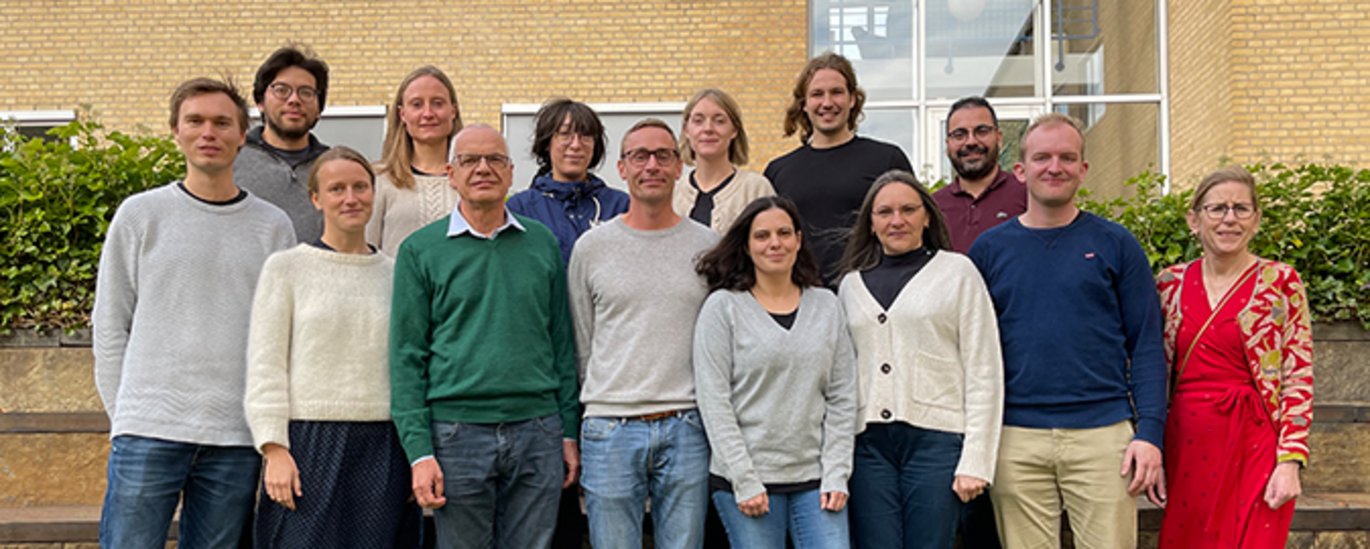Researchers discover how plant receptors proofread signals from symbiotic bacteria
An international team led by researchers from Aarhus University have discovered how plant receptors recognize specific carbohydrate signaling molecules from their bacterial symbionts. This ability enables the plant to select and accommodate nitrogen-fixing bacteria inside their roots. These new results also demonstrate how these receptors can be engineered to recognize signals from symbiotic bacteria and these discoveries are now being tested to engineer the crops of the future with the ability to fix nitrogen for a more sustainable agriculture.


Legume plants can form symbiosis with soil bacteria (Rhizobia) that fix atmospheric nitrogen and deliver it to the host plant. The recognition and accommodation of bacteria inside legume roots is tightly controlled by the plant that uses LysM receptors to monitor symbiotic bacterial carbohydrate signal molecules (called Nod factors) to distinguish symbionts from pathogens. In the study now published in the international journal PNAS, the researchers show how plant LysM receptors recognize symbiotic signaling molecules by using a novel kinetic proofreading mechanism.
- "We discovered that plant LysM receptors are only activated when they bind the correct Nod factors with the appropriate kinetics", says Kira Gysel, the leading author of the paper. "In this way plant receptors proofread bacterial signals and only when the correct Nod factors are recognized, the cellular program that leads to bacterial accommodation initiates", Kira concludes.
The research group at Aarhus University is part of the large international ENSA (Engineering Nitrogen Symbiosis for Africa) consortium that explores whether the symbiotic nitrogen fixation in legumes can be engineered and introduced into crops to support a low input and sustainable agriculture.
- "From this work we now know how to engineer LysM receptors to support symbiosis. The next big challenge for us is to see if we can use this knowledge to engineer cereal receptors to recognize symbiotic bacteria, which is an essential step when we want to transfer nitrogen-fixing symbiosis into other plant species", says Kasper Andersen.
Kinetic proofreading of lipochitooligosaccharides determines signal activation of symbiotic plant receptors
Kira Gysel, Mette Laursen, Mikkel B. Thygesen, Damiano Lironi, Zoltán Bozsóki, Christian T. Hjuler, Nicolai N. Maolanon, Jeryl Cheng, Peter K. Bjørk, Maria Vinther, Lene H. Madsen, Henriette Rübsam, Artur Muszynski, Arshia Ghodrati, Parastoo Azadi, John T. Sullivan, Clive W. Ronson, Knud J. Jensen, Mickaël Blaise, Simona Radutoiu, Jens Stougaard and Kasper R. Andersen
More information
Department of Molecular Biology and Genetics
Aarhus University, Denmark
kira@mbg.au.dk
Kasper Røjkjær Andersen
Department of Molecular Biology and Genetics
Aarhus University, Denmark
kra@mbg.au.dk - +45 20955917
Additional information
We strive to ensure that all our articles live up to the Danish universities' principles for good research communication (scroll down to find the English version on the web-site). Because of this the article will be supplemented with the following information:
Type of study: Experiment
External collaborators: Department of Chemistry, University of Copenhagen, 1871 Frederiksberg, Denmark; Complex Carbohydrate Research Center, University of Georgia, Athens, Georgia 30602, USA; Department of Microbiology and Immunology, University of Otago, Dunedin 9054, New Zealand; Institut de Recherche en Infectiologie de Montpellier, UMR 9004-CNRS, University of Montpellier, Montpellier, France.
External funding: This work was funded by the project Engineering Nitrogen Symbiosis for Africa (ENSA) currently supported through a grant to the University of Cambridge by the Bill & Melinda Gates Foundation and the UK Government's Department for International Development (DFID) and the Danish National Research Foundation (DNRF79) and in part by the U.S. Department of Energy grant (DE-SC0015662).
Conflict of interest: K.G., Z.B., L.H.M., S.R., J.S., and K.R.A., are inventors on patent application 62/718,186 submitted by Aarhus University that covers LysM receptors: Genetically altered LysM receptors with altered agonist specificity and affinity. D.L., M.L., S.R.,
J.S., and K.R.A., are inventors on patent application 63/027,151 submitted by Aarhus University that covers LysM Receptor Motifs.
